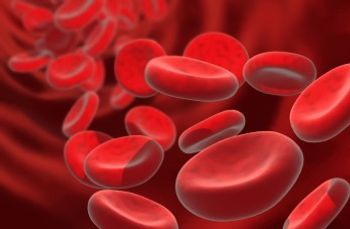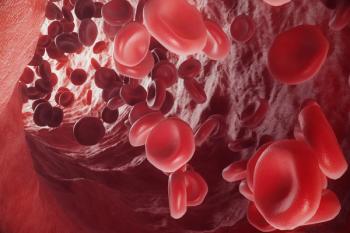
- ONCOLOGY Vol 25 No 14
- Volume 25
- Issue 14
Are We Trumping Bone Disease in Prostate Cancer?
We are seeing a new era in drug development with the identification of novel intra- and extracellular targets to which therapies are being directed. Perhaps more exciting is learning how to optimize standard therapies in combination with biologic agents and radiopharmaceuticals in order to target multiple pathways in prostate cancer growth. Stay tuned!
Rove and Crawford ably review the current state-of-the-art treatments for systemic control of prostate cancer, with an emphasis on newer drugs that are bone-trophic. This article brings to light that while the next generation of novel agents targeting the androgen receptor (AR), c-MET signaling pathway, or microtubular structures provide some measure of systemic disease control, the impact of these agents, in terms of their treatment scope, remains broad. It is not unusual, following these treatments, to see reports of mixed radiographic responses-for example, the volume of soft-tissue disease may have decreased while the impact on bone disease was minimal. In addition, there is a need to standardize reporting of antitumor responses in bone based on novel imaging modalities, which include positron-emission tomography (PET) scans with unique radiotracers, since the latter can be developed to target unique sites on the tumor, including the AR. While therapies are designed with an intent to target and treat all sites of disease, their effectiveness may be suboptimal in bone; past therapies that were considered to be bone-trophic may have provided no benefit other than pain palliation, with no impact on systemic disease.
Drug development in prostate cancer has taken a new turn. No longer are parameters such as decline in prostate-specific antigen (PSA) level being used as the major focus in the drug approval process. Rising PSA levels have typically been considered harbingers of treatment failure, resulting in premature termination of a drug well before its radiographic impact could be appreciated. The underevaluation of drugs long before their true benefit was ascertained has led to a reassessment of how we design and evaluate clinical trials. Similarly, clinical endpoints are now being developed with specificity for the drug under study, reflecting a more target-directed evaluation.[1] For example, circulating tumor cells and markers of bone turnover (osteopontin, osteoprotegrin, bone alkaline phosphatase, urinary N-telopeptides) are now being tested in phase III trials in castration-resistant metastatic prostate cancer in an effort to assess these as predictive and/or prognostic markers that can independently validate that a treatment has an effect on the biology of the disease. Prostate cancer is a bone-trophic disease, with a majority of patients developing bone metastases at some stage in the evolution of the disease. Impending pain from bone metastases remains a major concern for many patients, who harbor fear of ultimately succumbing to uncontrolled pain.
While the biology of cancer metastases to bone is complex, investigators have had significant insights into how newer therapies might target this milieu. The pathophysiology of developing bone metastases suggests that cancer cells remain within an “endosteal niche” in the bone marrow, from which they are later disseminated.[2] This process is facilitated by proteins that are expressed by both osteoblasts and stromal cells, such as stromal-derived factor-1 (SDF-1), Annexin II (AXII), and receptor activator of nuclear factor κB ligand (RANKL) proteins.[3-5] Additionally, the Wnt signaling pathway has been shown to contribute to osteoblastic metastasis in prostate cancer[6] by means of osteoblasts that can produce soluble inhibitors of the canonical Wnt pathway.[7] These include the Wnt signaling pathway antagonist DKK1,[8] which decreases development of bone metastasis, and Wnt inhibitor factor 1 (Wif-1).[6,7] Endothelin-1(ET-1) may also increase osteoblast activity by inhibiting expression of DKK1 in bone marrow stromal cells.[8] Furthermore, the Wnt stimulator Wnt7b is expressed by high-grade prostate cancer cells and not in normal prostate cells. Other mediators of osteoblastic metastasis include ET-1, a potent vasoconstrictor, and bone morphogenic proteins (BMP). ET-1 mediates its effects on bone formation through the endothelin-A (ETA) receptor. Osteoblastic prostate cancers express both ET-1 and ETA receptors, suggesting that tumor-produced ET-1 may have autocrine and/or paracrine effects. In patients with prostate cancer, BMP expression by prostate cancer cells has correlated with increased recurrence rates and decreased survival.[10] Other soluble factors that have an impact on osteoblastic bone metastasis include the proteases urokinase-type plasminogen activator (uPA) and PSA. Overproduction of uPA by prostate cancer cells has been shown to increase osteoblastic bone metastasis in murine models, and antisense DNA to uPA was shown to reduce bone metastases by one third.[11,12]
Recent data suggest that cancer cells express all components of the RANKL signaling pathway, although variations in pathway function may be unique to a particular cancer. Interestingly, there are data to suggest that bone-derived RANKL may serve as the proverbial “soil” of the “seed and soil” hypothesis or may act as a chemoattractant to bone for RANKL-expressing cancer cells, independent of bone resorption and osteoclast activity. Functional RANKL expression by prostate cancer cells is correlated with epithelial-to-mesenchymal transition and a threefold increase in bone metastases.[13,14] Thus, these data likely favor yet another tumor-related function for RANKL signaling in cancer progression.
The authors discuss bone-trophic treatments that to date have demonstrated varying amounts of significant systemic disease control but that also have resulted in significant pain relief along with an impact on overall survival. Radiopharmaceuticals such as the beta emitter strontium-90 (Metastron) have been associated with pain control; however, re-dosing of strontium-90 has been difficult due to its myeloablative effects and the potential for a pain flare post-infusion. Another beta emitter, samarium-153 (Quadramet), also has been approved for pain control and has the added advantage of being able to be redosed more frequently with a tolerable safety profile. It has been used in phase I[15] and phase II[16] clinical trials with docetaxel and has been shown to work synergistically with this agent; results show an impact not only on pain but on disease progression as well. Recently, a phase III clinical trial with the alpha emitter radium-223 (Alpharadin) combined with the best standard of care showed a 14-month median overall survival compared with 11.2 months for placebo plus best standard of care, with a 30% reduction in the risk of death (hazard ratio [HR], 0.695; P = .00185).[17,18] A preplanned interim analysis (by an independent committee) of this 809-patient trial randomized 2:1 in favor of radium-223 showed that the difference in the primary endpoint of overall survival was sufficient for the trial to be stopped early, on June 3, 2011. The experimental arm was also associated with a delay in the time to first skeletal-related event and in the time to PSA progression. The median time to first skeletal-related event was 13.6 months for the radium-223 arm compared with 8.4 months for the control arm (HR, 0.610; P = .00046). More than 40% of these patients had 20 or more bone metastases.
While a true bone-trophic agent may provide a more tolerable safety profile than other FDA-approved radiopharmaceuticals (such as the beta emitters strontium-89 and samarium-153), the combination of such an agent with docetaxel may contribute to ultimately establishing this multimodality approach as a standard-of-care. The adoption of such an approach would provide the opportunity to study novel biologic and chemotherapeutic agents in combination with radiopharmaceuticals-combinations that might be adapted to different clinical stages of the disease process. We are seeing a new era in drug development with the identification of novel intra- and extracellular targets to which therapies are being directed. Perhaps more exciting is learning how to optimize standard therapies in combination with biologic agents and radiopharmaceuticals in order to target multiple pathways in prostate cancer growth. Stay tuned!
Financial Disclosure: Dr. Slovin serves on speakers bureaus for Novartis and sanofi aventis.
References:
REFERENCES
1. Scher HI, Halaby S, Tannock I, et al. Design and end points of clinical trials for patients with progressive prostate cancer and castrate levels of testosterone: Recommendations of the Prostate Cancer Clinical Trials Working Group. J Clin Oncol. 2008;267:1148-59.
2. Roodman GD. Role of stromal-derived cytokines and growth factors in bone metastasis. Cancer. 2003;97(3 Suppl):733-8.
3. Christopher MJ, Liu F, Hilton MJ, et al. Suppression of CXCL12 production by bone marrow osteoblasts is a common and critical pathway for cytokine-induced mobilization. Blood. 2009;114:1283-4.
4. Shiozawa Y, Havens AM, Jung Y, et al. Annexin II/annexinII receptor axis regulates adhesion, migration, homing, and growth of prostate cancer. J Cell Biochem. 2008;105:370-80.
5. Jones DH, Nakashima T, Sanchez OH, et al. Regulation of cancer cell migration and bone metastasis by RANKL. Nature. 2006;440:692-6.
6. Westendorf JJ, Kahler RA, Schroeder TM. Wnt signaling in osteoblasts and bone diseases. Gene. 2004;341:19-39.
7. Hall CL, Bafico A, Dai J, et al. Prostate cancer cells promote osteoblastic bone metastases through Wnts. Cancer Res. 2005;65:7554-60.
8. Hall CL, Daignault SD, Shah RB, et al. Dickkopf-1 expression increases early in prostate cancer development and decreases during progression from primary tumor to metastasis. Prostate. 2008;68:1396-404.
9. Nelson JB, Hedican SP, George DJ, et al. Identification of endothelin-1 in the pathophysiology of metastatic adenocarcinoma of the prostate. Nat Med. 1995;1:944-9.
10. Fizazi K, Lipton A, Mariette X, et al. A randomized phase 2 trial of denosumab in patients with bone metastases from prostate, breast cancer or other neoplasms after IV bisphosphonates. J Clin Oncol. 2009;27:1564-71.
11. Lipton A. Future treatment of bone metastases. Clin Cancer Res. 2006;12(20Pt2):6305s-8s.
12. McClung M, Bone H, Cosman F, et al. A randomized, double-blind, placebo-controlled study of odanacatib (MK-822) in the treatment of postmenopausal women with low bone mineral density: 24 month results. Presented at the 30th annual meeting of the American Society for Bone and Mineral Research, Montreal, Quebec, Sept 12-16, 2008 (abstr 1291).
13. Odero-Marah VA, Wang R, Chu G, et al. Receptor activator of NF-kappaB ligand (RANKL) expression is associated with epithelial to mesenchymal transition in human prostate cancer cells. Cell Res. 2008;18:858-70.
14. Armstrong AP, Miller RE, Jones JC, et al. RANKL acts directly on RANK-expressing prostate tumor cells and mediates migration and expression of tumor metastasis genes. Prostate. 2008;68:92-104.
15. Morris MJ, Pandit-Taska N, Carrasquillo J, et al. Phase I study of samarium-153 Lexidronam with docetaxel in castration-resistant metastatic prostate cancer. J Clin Oncol. 2009;27:2436-42.
16. Fizazi K, Beuzeboc P, Lumbroso J, et al. Phase II trial of consolidation docetaxel and samarium-153 in patients with bone metastases from castration-resistant prostate cancer. J Clin Oncol. 2009;27:2429-35.
17. Bankhead C. Radium-223 improves prostate cancer survival. Medpage Today. 2011. Available at: http://www.medpagetoday.com/MeetingCoverage/ECCO-ESMO/28706. Accessed October 2, 2011.
18. Clinical Trial NCT00699751: Phase III study of Alpharadin (radium-223) in patients with symptomatic hormone refractory prostate cancer with skeletal metastases. US National Institutes of Health. Available at:
Articles in this issue
almost 14 years ago
Contemporary Management of Locally Invasive Bladder Canceralmost 14 years ago
Bladder Cancer Treatment: Optimize, Don't Compromisealmost 14 years ago
Green Tea (Camellia sinensis)almost 14 years ago
25 Years Later: Endangered Species or Successful Evolution?almost 14 years ago
Managing CRPC: Improving Symptoms, Survival, or Both?almost 14 years ago
Challenges in the Modern Treatment of Muscle-Invasive Bladder Canceralmost 14 years ago
In-Transit Melanoma: An Individualized ApproachNewsletter
Stay up to date on recent advances in the multidisciplinary approach to cancer.

















































































